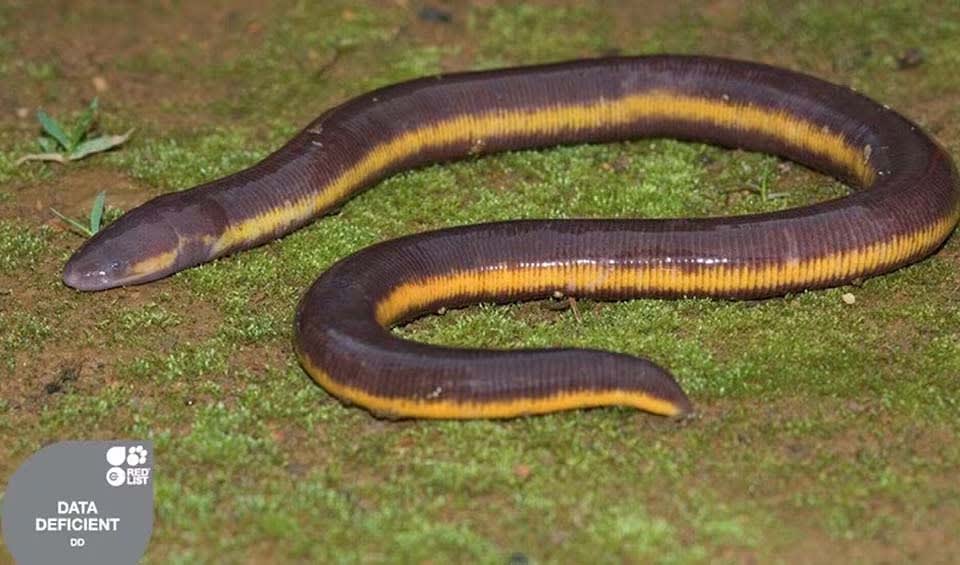Feeding primarily on earthworms and other soft-bodied organisms, Long-headed caecilians have developed well-suited adaptations for their diet. Their blunt heads and compact, bony skulls serve a specific purpose. With these structures, they efficiently bore through the sand and mud, creating subterranean tunnels that serve as their homes and hunting grounds.
Despite their initially unassuming appearance, Long-headed caecilians possess a formidable set of tools for capturing prey. Concealed within their seemingly soft exterior are numerous razor-sharp teeth, which they employ with precision to seize and immobilize their prey. These teeth play a crucial role in their subterranean lifestyle, allowing them to secure and consume a variety of soft-bodied invertebrates that dwell within the soil.
One of the distinctive features of Long-headed caecilians is their striking coloration. Their bodies are adorned with a prominent yellow stripe running along their length, complemented by several yellow spots on their dorsal surface. This unique color pattern contributes to their distinctive appearance, aiding in their camouflage and potentially serving as a warning to potential predators or rivals.
These caecilians, like others in their family, are well-adapted to a subterranean existence. Their secretive and cryptic lifestyle, combined with their specific habitat preferences, underscores the importance of preserving the rich biodiversity of India’s Western Ghats.
Distribution
 India
IndiaAnything we've missed?
Help us improve this page by suggesting edits. Glory never dies!
Suggest an editGet to know me
Terrestrial / Aquatic
Altricial / Precocial
Polygamous / Monogamous
Dimorphic (size) / Monomorphic
Active: Diurnal / Nocturnal
Social behavior: Solitary / Pack / Herd
Diet: Carnivore / Herbivore / Omnivore / Piscivorous / Insectivore
Migratory: Yes / No
Domesticated: Yes / No
Dangerous: Yes / No




